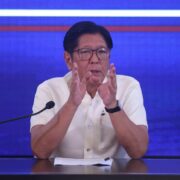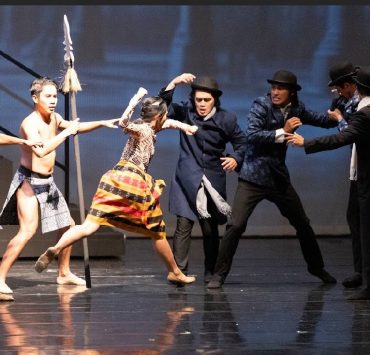Laguna: A serene haven for pilgrims
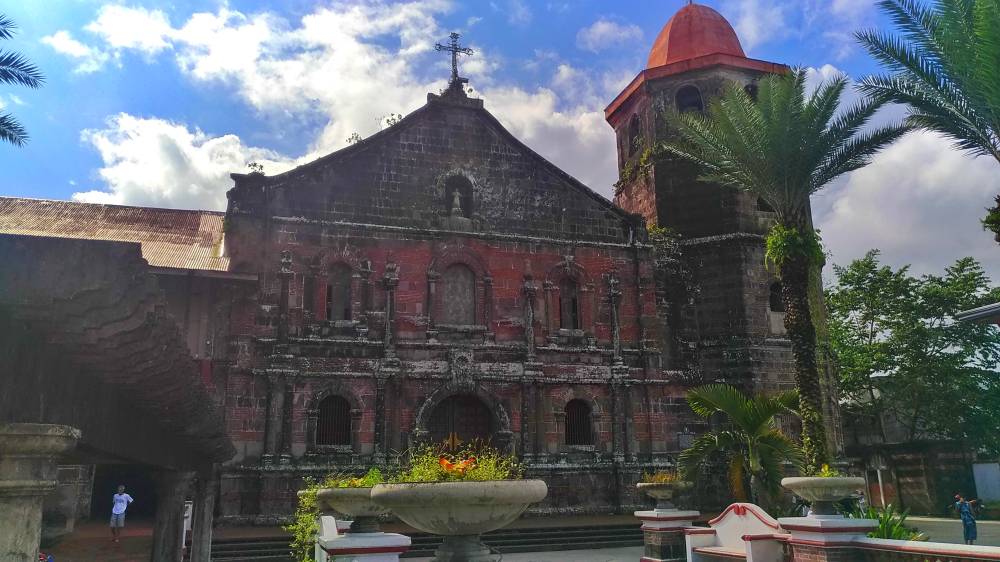
We Pinoys are a religious bunch. We’re always looking for something meaningful to do, especially on the long weekend of the Holy Week.
Some of us do the visita iglesia, the practice of visiting seven churches either on Maundy Thursday or Good Friday, while some retrace the Way of the Cross or engage in centuries-old religious practices. Many head out of the city for some much-needed time with loved ones and to practice Holy Week observances in their hometowns.
The province of Laguna is one popular destination this time of the year, thanks to the abundance of churches that are historic and worth visiting as well as the province’s rich heritage and spiritual nature. Just a few hours’ drive south of Manila, the province is teeming with places even for those who wish to go on a spur-of-the-moment religious pilgrimage.
St. Gregory the Great Parish Church
Majayjay
A National Cultural Treasure (Level 1) as recognized by the National Museum, St. Gregory the Great Parish Church—or San Gregorio Magno, also known as Majayjay Church—is one of the oldest Roman Catholic churches in the Philippines.
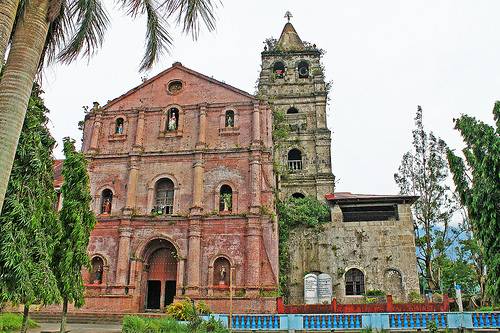
Located in the municipality of Majayjay, the church’s oldest structure was built out of nipa and bamboo in 1573. Years later, in 1616, a Romanesque stone church was built and completed in 1649. From 1711 to 1730, rehabilitation work was done on the church after it was damaged by several fires. The parish priest during that time, Jose de Puertollano, decided to sandwich the church’s existing walls between two layers of brick instead of rebuilding the structure. The result was an unusual wall thickness of 3 meters or 9.8 ft.
St. Bartholomew the Apostle Church
Nagcarlan
People usually troop to the town of Nagcarlan for the Nagcarlan Underground Cemetery, a historical landmark declared by the National Historical Commission of the Philippines. Just beside this national gem is the San Bartolome Apostol Church or more commonly known as Nagcarlan Church.

The first church was erected in 1583 using light materials such as wood and nipa. More than a century later, a second church was built using bricks and stones. The Baroque-style church features a tiered wall, with a semi-circular arch main entrance flanked by semi-circular windows and pedestal columns. The four-story bell tower beside the church bears Muslim-inspired crenellations and a Franciscan coat-of-arms.
St. John the Baptist Church
Liliw
An imposing red brick façade greets churchgoers and visitors to St. John the Baptist Church or Liliw Church. The Baroque-style structure houses three retablos (altars). The main one contains 13 niches that enshrine the statues of saints, while the other two on each side has four.
On the church’s patio called Patio de Sagrada Familia are statues of patron saints of Liliw’s barangays, surrounding a statue of the Sacred Heart of Jesus which stands in the middle of the patio.
Procession of statues
Paete
Famous for its highly skilled artisans especially in the fields of woodcarving and papier mache-making, the town of Paete presents a solemn spectacle every Holy Wednesday.
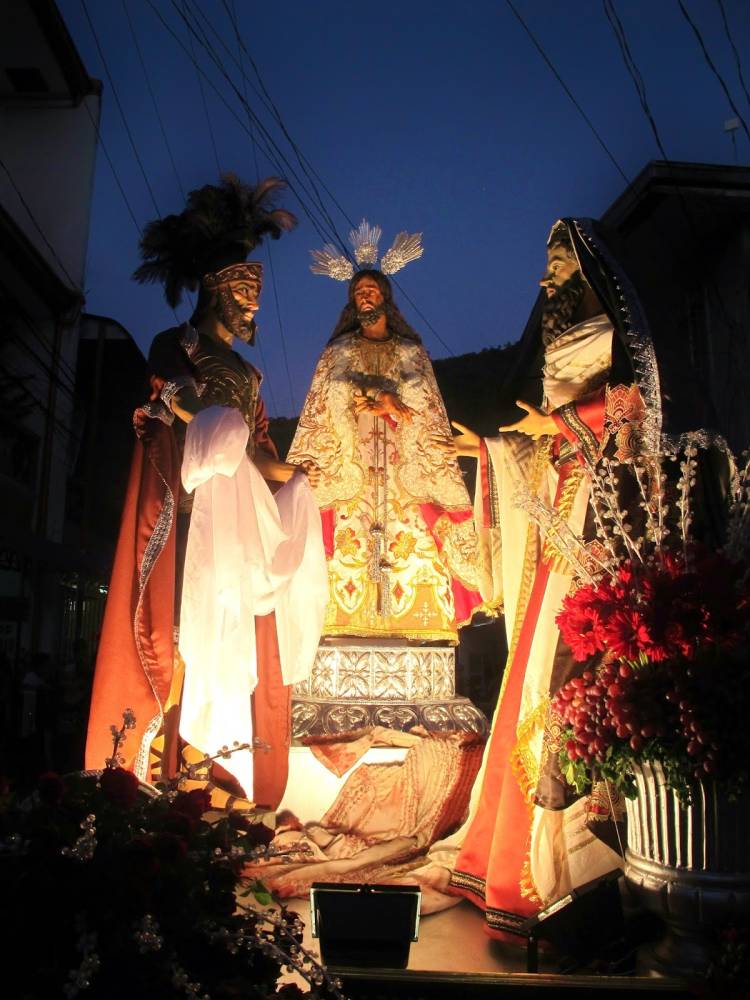
The town’s streets bear witness to the procession of 53 life-sized statues, all intricately dressed and elaborately decorated, that mostly depict the life and death of Christ. If you can’t make it on that day, Paete’s church, St. James the Apostle Church, is also worth seeing.
Good Friday procession
Pakil
The town of Pakil has an interesting Good Friday procession that religious pilgrims might want to witness.
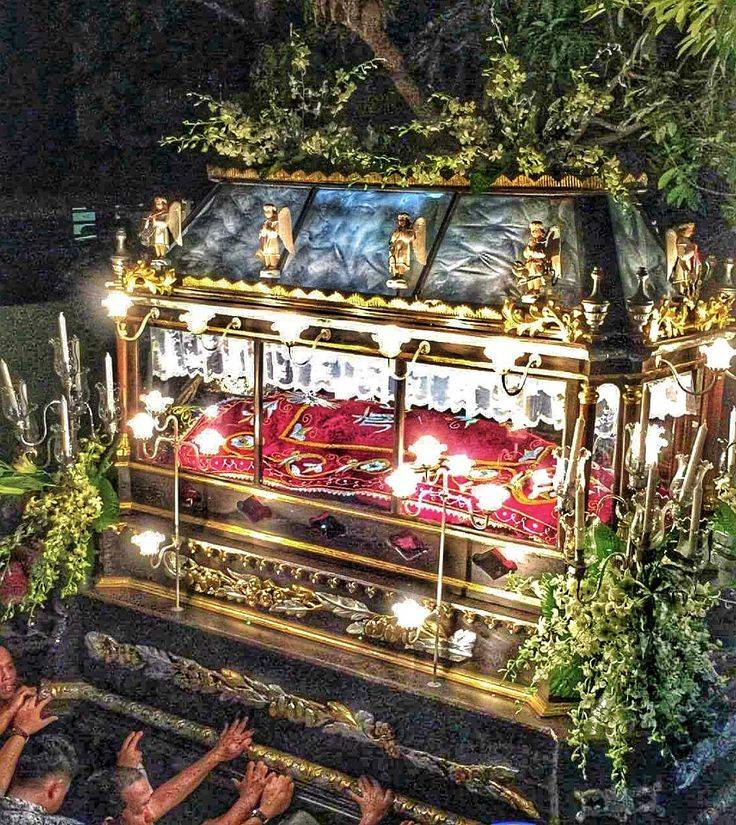
The Santo Entierro (statue of the dead Christ) is smoked over lanzones peelings (the fruit is a principal agricultural product of the town) and carried on the shoulders of the townspeople during the procession. As the calandra bearing the dead Christ makes several stops, it is laid above the burning peelings while a designated crier faces the bier and declares, “Señor! Misericordia, Señor! (Lord! Mercy, Lord!),” which the congregation then repeats.
Sources: Inquirer Archives, philippinefaithandheritagetours.com










